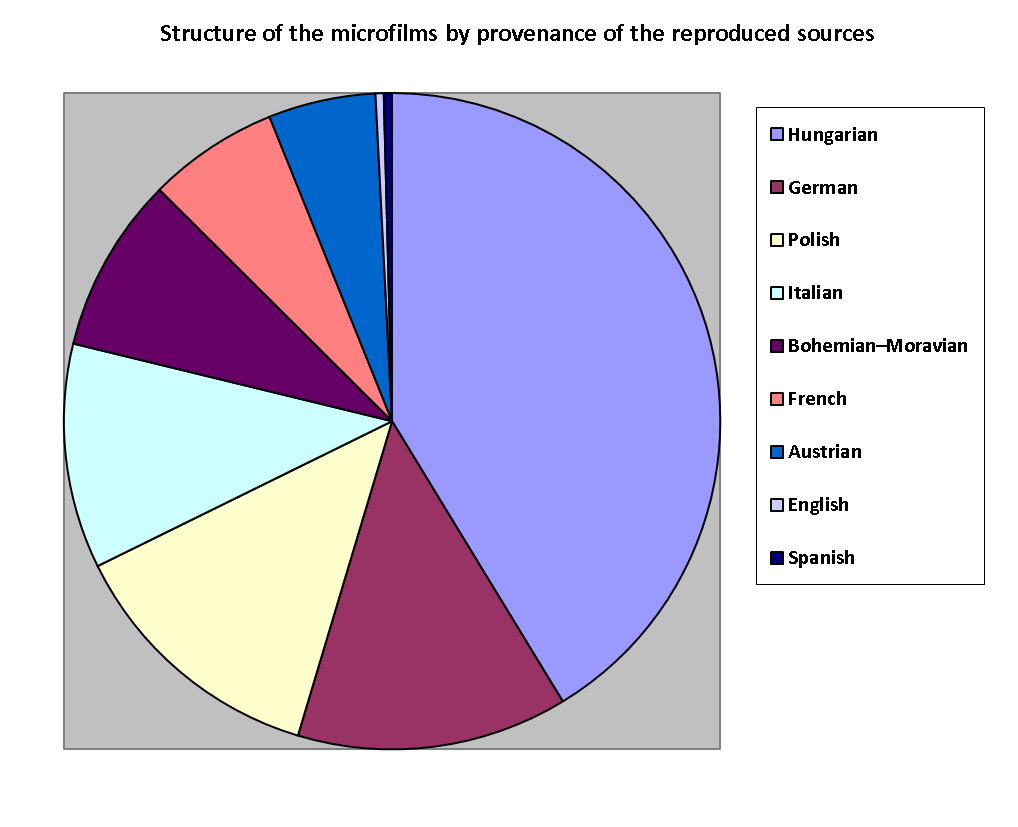Further details
Examining the history and traditions of medieval liturgical music calls typically for several sources to be studied “at once”. The one means of doing so available in earlier decades was with microfilm copies. It was to meet the requirements of the researchers into early music (still within the frame of the Folk Music Research Group at that time) that the Institute’s Microfilm Collection was formed in 1966. One founder was Janka Szendrei, who looked after it for decades (through to the recent past), kept its register, and in conjunction with László Dobszay, saw to its systematic expansion.
It contained copies from Hungarian and in some cases foreign collections, coupled with some films made by the Collection staff itself. Its systemic expansion followed two criteria: (1) to gather as far as possible the musical sources of Hungarian medieval liturgical music, and (2) to obtain comparative sources from abroad.
As for the first, the number of surviving sources from Hungary is severely limited by international standards: widespread destruction has left an estimated 180‒200 notated sources. Adding in unnotated sources (such as breviaries and missals), there are only, as a working hypothesis, 350 musical sources associable with the Hungarian Middle Ages. Here the Microfilm Collection can be called remarkably complete. Furthermore, it includes a representative collection of modern sources of the period from Hungary.
The comparative sources acquired (altogether about 550) are set partly by the research topics at any time, and partly by the goal of a collection representing in order of importance the regional and institutional traditions connected with the Hungarian tradition. So they are strong on the medieval Gregorian sources from Central Europe, less so on those Southern and Western Europe. Of course the collection is not complete in this respect and was not intended to be. The aim was for a researcher with a certain concept to find the relevant sources from various periods and districts side by side, and conduct comparative examinations. So the collection is less important as an archive than as a means of research assistance. Though the quantity of source materials present is considerable, its specialist importance lies less in its size than in its composition: it alone covers the full range of sources for early Hungarian music, and for some regions it is internationally important to research into medieval music. Its registry for a long time consisted of a handwritten list, now in digital form, that more or less followed the order of acquisition, so that apart from its main objectives, it provides a timeline of the research over the period since its foundation.
Most of the microfilms tie in with background researches for the medieval volume of the History of Music in Hungary, or with notation research conducted by Janka Szendrei. A surge of acquisitions followed from the CAO‒ECE series begun in 1988 and from research into the Ordinary, which speeded up in the 1990s. Interest in the source work arising from new directions of research and in certain areas of it pursued by a younger generation tied in with work in foreign libraries (e. g. in Zagreb, Prague and Olomuc), and some previously neglected fields (e.g. post-Tridentine manuscripts and printed materials). However, the microfilms are playing a decreasing role in new acquisitions, due to greater quantity of digital sources being made available.







